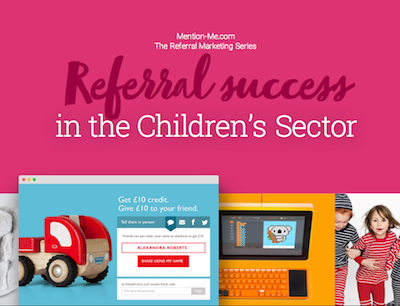Chatbots: the future of marketing or the latest on-trend gimmick?
As the importance of generating and leveraging authentic, two-way conversations with customers has come to the fore in the digital age, brands have eagerly taken up the challenge to ‘go where their customers go’.
Social media has long been established as the obvious focus of that. But more recently, marketers have realised the importance of ‘going deeper’, via ever-more personal communication channels.
Namely, the rapid surge in popularity of closed group messenger apps such as Whatsapp and Facebook Messenger has triggered a move amongst brands to roll out increasingly personalised marketing and sales methods. And one particular piece of tech that’s recently emerged as a potentially key player in that, is the chatbot.
Chatbots describe artificial intelligence (AI) computer programs that can interact with customers in real-time by simulating authentic two-way conversation. In theory, a game-changer for e-commerce. Customer service, support and sales being driven by truly intelligent automated systems? Sounds like something that brings untold efficiencies and innovations.
On the other hand, the jury appears to be very much out on just how capable chatbots are in creating authentic ‘human’ conversation. Or more widely, even if the tech were up to the task, a question remains as to whether chatbots are truly filling a significant gap and need.
So, are chatbots the revolutionary customer-facing marketing and support tool some claim? Or has their popularity been driven more by many a marketer’s weakness for the gimmicky ‘next big thing’, rather than a genuine consumer need?
Let’s take a closer look at the relative pros and cons of chatbots, consider whether their time is truly now — and what it could all mean for marketers.
The pros of chatbots
Consumer autonomy
Research by Oracle finds that more than one in three brands say customers and prospects “prefer to complete a purchase or resolve service issues without speaking to a human associate, if possible”. In the digital economy, customers increasingly wish to be in complete control of their purchasing experience, deciding how, where, and when they interact with a chosen brand.
Flexible, 24/7 AI tech in the form of chatbots promises to set consumers free to call the shots, to an extent which simply hasn’t been previously possible.
More cost-efficient and scalable customer support
Chatbots have forced a complete reimagination of what customer support is and could be. Though it seems unimaginable right now to consider a completely computerised customer service centre, more and more companies are experimenting with latest tech and testing just how far chatbots can be utilised in a drive for more efficient, cost-effective customer services.
Chatbots could also be prove to be a great leveller. In times gone by, fully-fledged customer service centres were beyond the reach of small companies and start ups. But with the aide of chatbots, they feel like more feasible, scalable systems.
Data collection and personalisation
Another high value role that chatbots can play is in their potential to systematically collect and analyse data that can be used to optimise the customer experience, and offer personalised solutions. For instance, chatbots could track and analyse a customer’s purchasing decisions, frequency of enquiry topics, or their navigational behaviours, in order to determine the most relevant information and deliver personalised product recommendations.
A couple of pioneering examples from recent months include clothing brand Nordstrom’s chatbot driven gift guide, and the Toronto International Film Festival’s chatbot movie guide.

A new model for search and navigation
Some suggest that AI could even eventually replace the existing default model for web navigation. That is, instead of finding information via a search tab or the until-now standard UI menu items and icons, chatbots may open the door for a completely alternative ‘conversation-based interface’.
Well-known AI-driven ‘assistants’ such as Siri on iOS and Cortina for Windows are already examples of this in action — helping device users to find what they need and perform tasks based on context-based queries, rather than clicking around icons and screens. It could be a matter of time before similar conversational-led interfaces become the norm across websites and apps.
The cons of chatbots
Intelligent — but not intelligent enough
Though the AI tech behind chatbots is impressive, let’s not get too carried away. Specifically, in relation to their ability to carry out two-way customer support communications, chatbots still seem far from the finished article — as this Econsultancy piece recently highlighted.
But even with further advancements in chatbot AI, some experts believe that the buzz around chatbots as a customer support tool specifically, is somewhat of a red herring. Rather, it’s actually in the field of personalised product discovery and where chatbots are set to add the greatest value. Although, that brings us to the next mooted downside of chatbots...
Security and privacy concerns
When it comes down to it, chatbots represent another system for collection of high-volumes of personal data. No matter how ‘authentic’ the AI personas and conversational skills become, there’s the obvious risk that bots may come to be viewed as invasive, slightly creepy ‘brand pests’’ deployed to poke around into what customers are up to, and how that can be manipulated for commercial gain. Confidence in bots will be something that brands will rightly have to earn, rather than expect.
Earlier in this article we pointed out that on the one hand, chatbots could facilitate greater customer autonomy... if they don’t become an overbearing presence. Otherwise, they could just as easily smother user autonomy and become a nuisance. The same Oracle research referenced earlier, also points out that 38% of customers “want to initiate sales discussions themselves rather than be approached by a brand, regardless of how relevant and personalised the approach is”. Before hatching pie-in-the-sky ideas of super intelligent automated conversationalists, brands should ask themselves: is that actually what our customers truly want?
Questionable evidence of consumer demand
Perhaps the strongest case against chatbots is that there’s little compelling evidence of the user demand for them. Rather than filling an obvious gap and need, chatbots may yet prove to be the over-engineered plaything of neophile enthusiasts, rather than a compelling solution to critical collective demand among consumers.
This rings especially true in relation to the role of AI in navigation and so-called ‘intelligent discovery’. Arun Uday puts it well in this Tech Crunch critique of the buzz around chatbots:
I find it bemusing that not only are chatbot developers springing up like mushrooms in the monsoon season, but businesses are also actually eager to avail of their services sans any credible evidence of a real user need for them. Think about it. Why would anybody want to replace an existing setup that is 100 percent accurate and takes less effort to use (i.e. UI-driven menus) with something that is inaccurate and requires more effort to use (i.e. chatbots)?
In other words, as the old saying goes: if it ain’t broke, don’t try to fix it...
Conclusion
Although emergent chatbot tech is undoubtedly full of potential for business and consumers alike, they’re unlikely to be the widespread marketing and customer relations panacea that some seem to be keen to herald it as.
Customers today, as they always have, crave authentic, personalised interactions with brands. Yet, there’s little evidence to suggest that large swathes of consumers are desperate for that communication to happen through means of artificial intelligence.
Quite the opposite, for most of us it seems quite unlikely that if we’re given the choice, we’d choose to interact with computerised mimicry of human behaviour, rather than the real thing.
We predict a continued experimentation with bots amongst marketers in the coming months and years, and their establishment in specific niches spanning content navigation, discovery and basic customer support.
But more widely, we’re always going to be drawn to communication with real-life human beings. As far as marketers are concerned, for the time being at least, bots can’t compete with or displace the influence of human-to-human interaction and engagement.
This is at the heart of what makes truly socially-driven marketing, such as refer-a-friend programmes, such powerful ecommerce tools.
Angela Southall
Read more >
Never miss another update
Subscribe to our blog and get monthly emails packed full of the latest marketing trends and tips







